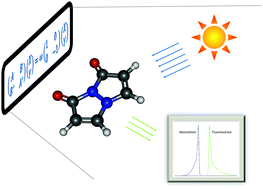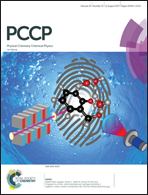Using non-empirically tuned range-separated functionals with simulated emission bands to model fluorescence lifetimes†
Abstract
Fluorescence lifetimes were evaluated using TD-DFT under different approximations for the emitting molecule and various exchange–correlation functionals, such as B3LYP, BMK, CAM-B3LYP, LC-BLYP, M06, M06-2X, M11, PBE0, ωB97, ωB97X, LC-BLYP*, and ωB97X* where the range-separation parameters in the last two functionals were tuned in a non-empirical fashion. Changes in the optimised molecular geometries between the ground and electronically excited states were found to affect the quality of the calculated lifetimes significantly, while the inclusion of vibronic features led to further improvements over the assumption of a vertical electronic transition. The LC-BLYP* functional was found to return the most accurate fluorescence lifetimes with unsigned errors that are mostly within 1.5 ns of experimental values.



 Please wait while we load your content...
Please wait while we load your content...